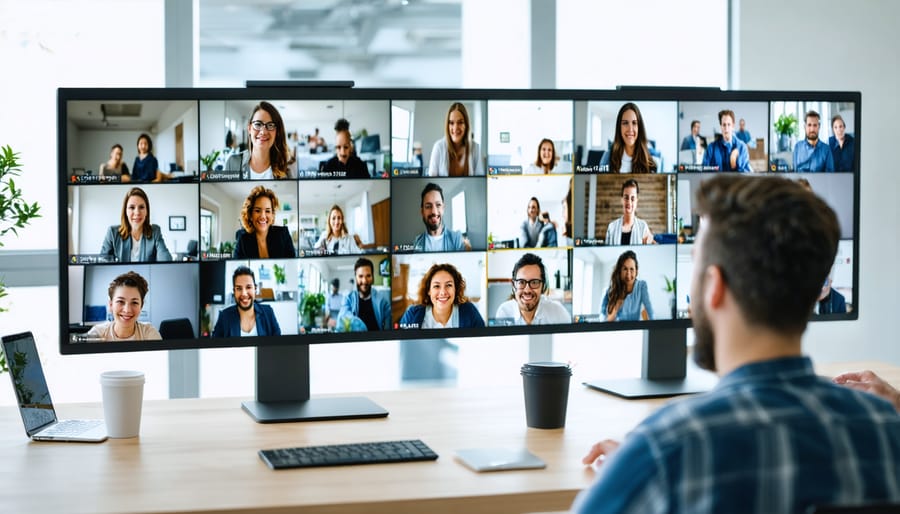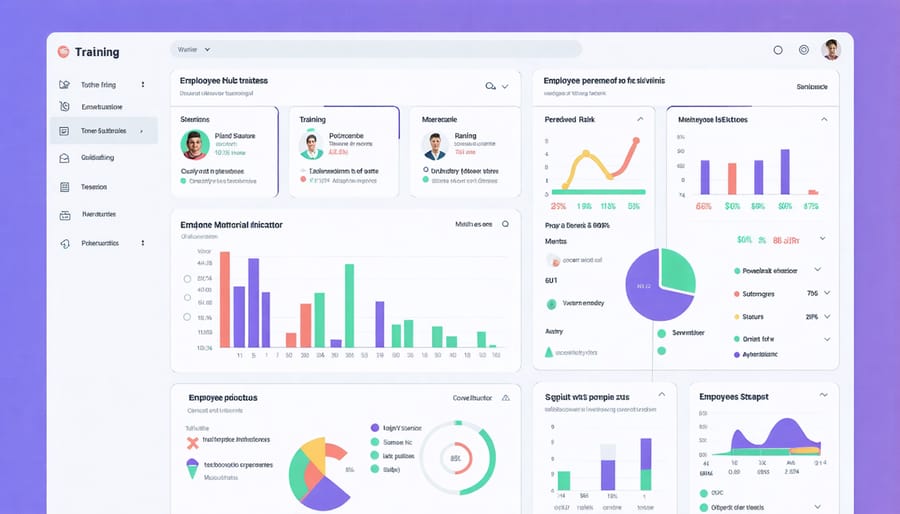
Transform your corporate training from a mandatory checkbox to a dynamic growth engine by embracing modern methodologies that actually work. Gone are the days of mind-numbing PowerPoint marathons and generic one-size-fits-all approaches. Today’s most successful companies recognize that effective training is personalized, interactive, and deeply connected to real-world applications.
Whether you’re revamping your existing program or building one from scratch, understanding the latest training methodologies isn’t just about staying current—it’s about creating genuine impact. From microlearning modules that respect busy schedules to gamified experiences that boost engagement, the right approach can turn routine training into a powerful catalyst for organizational success.
In this guide, we’ll explore cutting-edge corporate training methodologies that blend psychological insights with practical implementation strategies. You’ll discover how to create learning experiences that not only stick but inspire your team to actively participate in their professional development journey. Let’s dive into the approaches that are revolutionizing how companies build stronger, more capable teams.
Building a People-First Training Culture

Creating Safe Learning Spaces
Let me share something I learned early in my career: a tense, fearful environment is the enemy of effective learning. When I first started conducting corporate training sessions, I noticed how participants would hesitate to ask questions or share ideas, worried about appearing less knowledgeable. This realization led me to explore better approaches to creating effective learning environments.
Start by establishing clear ground rules that emphasize respect and confidentiality. Encourage participants to view mistakes as stepping stones rather than stumbling blocks. Something as simple as acknowledging your own learning moments can help break down barriers and create a more relaxed atmosphere.
Consider incorporating icebreaker activities that help team members connect on a personal level. Create smaller breakout groups where quieter participants feel more comfortable contributing. Remember to celebrate progress, no matter how small, and always provide constructive feedback privately.
Most importantly, maintain a consistent message that questions are welcome and learning is a journey we’re all on together. When employees feel psychologically safe, they’re more likely to engage, experiment, and ultimately master new skills.
Personalizing the Learning Journey
Remember when one-size-fits-all training left half the room daydreaming while others struggled to keep up? Those days are thankfully behind us! Today’s corporate training recognizes that each employee brings their own unique learning style to the table.
I’ve found that the secret to successful training lies in offering multiple pathways to mastery. Visual learners might thrive with infographics and video tutorials, while hands-on learners need interactive simulations. Some of your team members might prefer reading comprehensive guides, while others learn best through group discussions.
Consider implementing learning style assessments at the start of training programs. This helps create personalized learning paths that match each employee’s preferences. Mix and match delivery methods – combine self-paced modules with live workshops, offer both written and audio content, and include practical exercises that cater to different learning approaches.
The beauty of personalized learning is that it shows employees you value their individual growth journeys. When people feel seen and supported in their learning style, they’re more likely to engage with the material and retain information long-term.
Interactive Learning Techniques That Engage
Role-Playing and Scenario Training
Picture this: You’re faced with a challenging client conversation, but instead of diving straight into the deep end, you get to practice and refine your approach in a safe, supportive environment first. That’s the magic of role-playing and scenario training in corporate settings!
I remember facilitating a training session where a typically shy team member transformed into a confident presenter through carefully crafted scenario practice. These immersive experiences don’t just build skills; they create lasting confidence that carries into real-world situations.
To boost engagement and participation, try incorporating real customer feedback and actual workplace challenges into your scenarios. This approach makes the training immediately relevant and applicable. For example, customer service teams can practice handling difficult conversations using scripts based on recent customer interactions, while sales teams might role-play negotiations using current market conditions.
The key is creating a supportive atmosphere where people feel comfortable making mistakes and learning from them. Consider starting with simple scenarios and gradually increasing complexity as confidence grows. Mix up the roles, too – having employees play both customer and company representative provides valuable perspective and deepens understanding.
Remember to include time for feedback and reflection after each scenario. These moments of discussion often yield the most valuable insights and help cement the learning experience.

Microlearning Moments
Remember when you tried learning a new language by diving into a thick textbook? It probably felt overwhelming! That’s exactly why microlearning has become such a game-changer in corporate training. By breaking down complex topics into bite-sized, 5-15 minute lessons, we’re seeing incredible results in employee engagement and knowledge retention.
I recently spoke with Sarah, a training manager at a tech startup, who transformed her company’s onboarding process using this approach. Instead of overwhelming new hires with day-long sessions, she created short, focused modules they could complete between tasks. “It’s like having coffee break-sized learning moments,” she shared, “and our team actually looks forward to them!”
The beauty of microlearning lies in its flexibility. Using modern tech solutions, you can deliver these mini-lessons through various formats – quick videos, interactive quizzes, or even mobile-friendly infographics. Think of it as creating a playlist of learning moments that employees can access whenever they need a quick skill refresh.
The key is making each lesson focused on a single, specific learning objective. For example, rather than covering “customer service” as one massive topic, break it down into smaller chunks like “greeting customers effectively” or “handling common complaints.” This approach not only makes learning more manageable but also allows for immediate application of new skills in real-world situations.
Measuring Success Beyond Numbers

Employee Growth Indicators
Ever wondered how to truly measure if your team is growing? Let me share what I’ve learned from working with successful organizations. The key is looking beyond just test scores and completion rates – we need to focus on real, tangible growth indicators that show genuine skill development.
Start by tracking practical application metrics – how often are employees actually using their newly learned skills in their daily work? Create simple checkpoints where team members can demonstrate their progress through real-world scenarios. For instance, after a presentation skills workshop, monitor how participants improve during team meetings.
Another meaningful indicator is peer feedback. Set up a supportive system where colleagues can share observations about each other’s growth. I’ve seen this work wonders in building both skills and team spirit! Look for signs of knowledge sharing too – are trained employees becoming mentors to others?
Don’t forget about project outcomes. Track how training impacts actual business results, like improved customer satisfaction scores or faster project completion times. Remember, the best growth indicators are those that align with both individual development goals and your organization’s objectives.
Long-term Impact Assessment
Ever wonder if those training sessions actually stick? As someone who’s been on both sides of corporate training, I’ve learned that measuring long-term impact isn’t just about checking boxes – it’s about watching real change unfold in the workplace.
The most effective way to track sustained behavioral changes is through a combination of regular check-ins and performance metrics. Think of it like tending to a garden; you don’t just plant the seeds and walk away. Instead, successful companies implement 30-60-90 day follow-up assessments, where employees demonstrate how they’re applying their new skills in real-world situations.
One approach I’ve seen work wonderfully is the “success story database” – where teams document specific instances of applying their training to solve workplace challenges. This not only measures impact but also inspires others! Peer feedback loops and mentor observations provide valuable insights into how well the training has been integrated into daily work life.
Remember, the true measure of training success isn’t just about immediate results – it’s about creating lasting positive changes that benefit both the individual and the organization.
As we wrap up our journey through corporate training methodologies, I’m reminded of a conversation I had with Sarah, a close friend who transformed her team’s performance through innovative training approaches. The key message is clear: successful corporate training isn’t about checking boxes – it’s about creating meaningful experiences that resonate with your employees.
Remember, the most effective training programs embrace flexibility and personalization. Whether you’re implementing microlearning modules for your remote team or incorporating gamification elements to boost engagement, the goal is to make learning both accessible and enjoyable. I’ve seen firsthand how companies that adapt their training methods to match their employees’ needs and learning styles consistently achieve better results.
Don’t feel pressured to overhaul your entire training system overnight. Start small, perhaps by introducing one new methodology at a time, and gather feedback from your team. Pay attention to what works and what doesn’t in your specific workplace culture. The beauty of modern training approaches is their adaptability – you can always adjust and refine as you go.
As you move forward, keep in mind that the most successful training programs are those that evolve with your organization. Stay curious, remain open to new methods, and most importantly, keep your employees’ growth and development at the heart of your training strategy. Your commitment to innovative training today will shape your organization’s success tomorrow.



